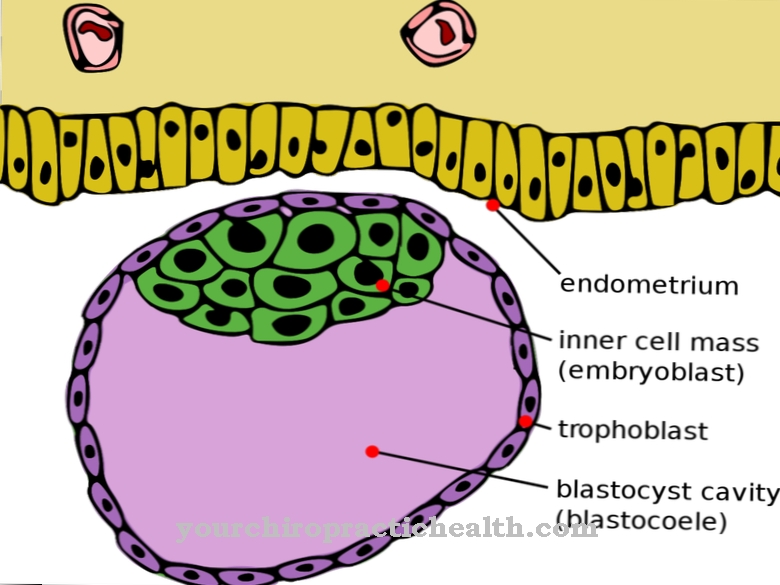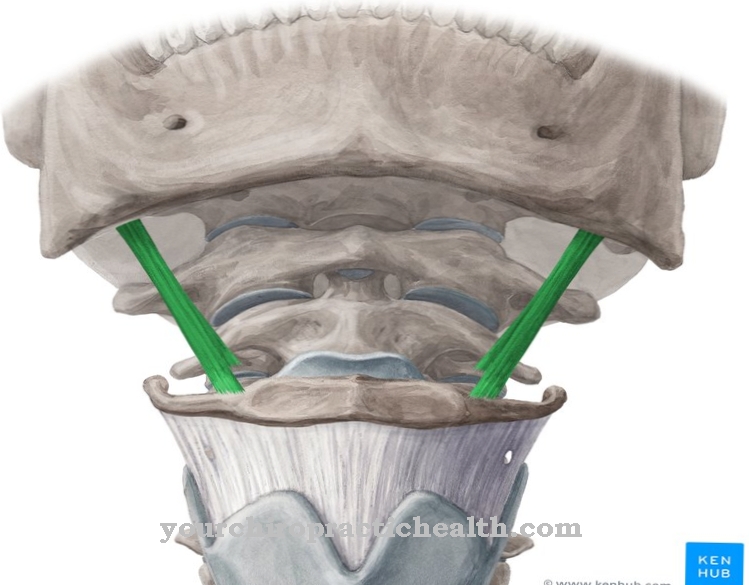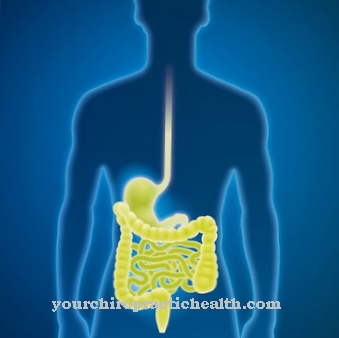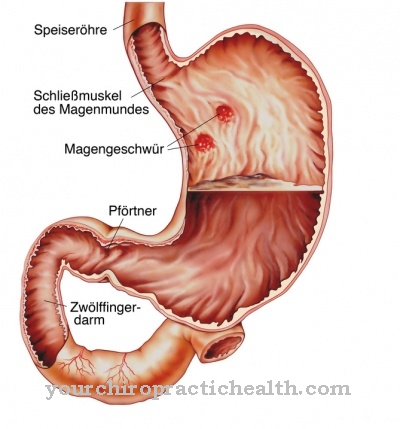Without that Parietal lobes Spatial thinking, haptic perception or the controlled execution of hand and eye movements would not be possible for humans.
The area of the cerebrum, which is particularly important for sensory purposes, lies between the temporal, frontal and occipital lobes and, as part of the central nervous system, can be involved in many neurological deficits. Tumors, strokes or inflammatory CNS diseases such as multiple sclerosis are most frequently responsible for a dysfunctional lesion in the parietal lobe.
What is the parietal lobe?
The parietal lobe is the part of the cerebrum and central nervous system that is primarily responsible for sensory tasks. In medical terminology, this part of the brain is called the parietal lobe, which borders the occipital lobes and the frontal lobes and thus forms the central part of the cerebrum.
Because of its location in the upper brain area, the parietal lobe is partly too Parietal lobes called.The parietal area is separated from the brain stem and cerebellum by the temporal lobe. In the area of the parietal lobe there are also eight of the Brodmann areas, which describe the individual functions of the cerebral cortex.
Anatomy & structure
The parietal lobe is bounded in the anterior area by the central groove and in the posterior area by the so-called ocipital lobe. The posterior border forms a line from the sulcus parietooccipitalis to the incisura praeoccipitalis. At the bottom, the temporal lobe is adjacent to the parietal lobe.
The lower limit of the range is thus roughly on the same level as the Sylvian fissure. In the parietal lobe lie the sulcus postcentralis and connected to it the sulcus intraparietalis, which divides the posterior cortex of the parietal lobe into two individual lobules. The parietal lobe itself consists of the upper and lower parietal lobes, also known as the cortex parietalis posterior and the lobule parietalis inferior. This area of the brain contains many of the so-called Brodmann areas, which gives clues about its general function.
Function & tasks
Perceptions are a matter of the parietal lobe. In general, this area of the brain performs important tasks in processing all sensory impressions. Somasensory functions in particular fall within the scope of the parietal lobe. These somasensory functions primarily include the sensation of haptic, i.e. tactile, perceptions. The parietal lobe is also involved in visual stimulus processing, above all in the detection of movements in the viewer's immediate field of vision. The parietal brain is thus largely responsible for spatial orientation.
Spatial attention, spatial thinking, reading and arithmetic would be inconceivable without this section of the cerebrum. The upper section of the parietal brain in particular analyzes where things are in the viewer's field of vision or where they are moving. In addition, the parietal lobe creates a plan how the perceiver can get to these things. Even the purposeful execution of these movements takes place in the parietal brain. Movements and touches on the skin are also perceived through this part of the brain.
Even the decision as to which stimulus in the field of vision the observer should pay attention to is made in this area. The recognition of objects is finally implemented in the lower parietal brain. For this purpose, information from the visual field is related to sensation information. In the area of the angular gyrus, the lower parietal brain is also involved in speaking and reading.
As part of the parietal lobe, the intraparietal sulcus also has important functions. This area connects the visual system with the human movement system and is primarily used for the controlled execution of hand and eye movements.
Diseases
Various neurological disorders and diseases can occur in connection with the parietal lobe, each of which shows up as a lesion on imaging. One of the best-known of these is Gerstmann syndrome, which was first described by Josef Gerstmann at the beginning of the 20th century and actually represents a whole complex of symptoms.
This syndrome is now controversial, as most patients with the symptoms of the Gerstmann complex also have other symptoms. One of the individual symptoms of Gerstmann syndrome is agraphia. This means a writing difficulty that occurs independently of motor skills and intelligence. Acalculia, that is, a numerical difficulty, also occurs symptomatically. The spatial functions of the parietal lobe also lead to left-right weaknesses and difficulties in counting and naming one's own fingers and toes.
Gerstmann syndrome occurs when the Brodmann area 40, which is located in the parietal lobe, is damaged. Such damage can, for example, be due to a stroke or an inflammation in this area due to, for example, a degenerative disease such as multiple sclerosis.
In the case of strokes as well as inflammation-related damage, the symptoms may regress over the next few days and weeks. A second disorder directly related to the parietal lobe is the rather rare Bálint syndrome. This results in an inability to make targeted gripping or hand movements. In addition, targeted movements of the eyes are disturbed, visual attention is impaired and complex images can no longer be fully captured.
Bilateral, parietal or parieto-occipital lesions in the brain are responsible for the clinical picture. In addition to brain tumors and diseases such as Creutzfeldt-Jakob disease, strokes and inflammatory diseases can also cause brain damage. As with Gerstmann's syndrome, the symptomatic deficits in Balint's syndrome can regress if they were triggered by a stroke or an MS lesion.
You can find your medication here
➔ Medicines against memory disorders and forgetfulnessTypical & common brain diseases
- dementia
- Creutzfeldt-Jakob disease
- Memory lapses
- Cerebral hemorrhage
- Meningitis



























